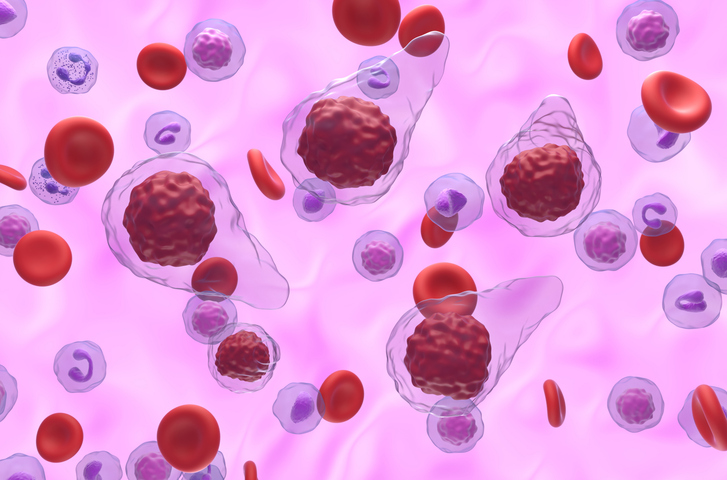
According to a study presented at the Society of Hematologic Oncology 2024 Annual Meeting in Houston, Texas, although myelofibrosis (MF) patients receiving pacritinib (PAC) and momelotinib (MMB) share similar demographics, there are significant differences in their genomic profiles and baseline laboratory values, which may influence treatment outcomes.
Investigators analyzed data from 47 patients, with 30 patients receiving MMB, 25 receiving PAC, and eight receiving both. The analysis included demographic information, blood counts, cytogenetic profiles, genomic mutations, and prior therapies at the start of PAC or MMB treatment.
Both treatment groups had similarities in demographic and clinical characteristics, with baseline moderate anemia observed (mean hemoglobin levels of 8.8 g/dL for MMB and 9.1 g/dL for PAC) and similar rates of transfusion dependency. MMB-treated patients trended toward higher white blood cell and platelet counts, although the differences between groups did not reach statistical significance.
Genomic analysis revealed notable distinctions. PAC-treated patients were more likely to have multiple mutations (average 3.2 versus 2.3 for MMB patients) and higher rates of TET2 mutations (24% vs 0%) and U2AF1 mutations (29% vs 14%). Conversely, MMB-treated patients had higher rates of MPL mutations (23% vs 0%) and were less likely to have JAK2 mutations (50% vs 82%).
Patients in both groups had undergone an average of two to three prior therapies, primarily ruxolitinib, hydroxyurea, and danazol. Most patients (95%) started on full doses of PAC (200 mg twice a day) or MMB (200 mg daily), with a few starting on reduced doses due to drug interactions or kidney function concerns.
The investigators called for further research “to understand differential clinical activity when leveraged in the real-world setting.”
Reference
DiGennaro J, Concepcion G, Ali NA, et al. Genomic and molecular analysis of myelofibrosis patients who received momelotinib and pacritinib at Moffitt Cancer Center. Abstract #MPN-288. Presented at the Society of Hematologic Oncology Annual Meeting; September 4-7, 2024; Houston, Texas.






 © 2025 Mashup Media, LLC, a Formedics Property. All Rights Reserved.
© 2025 Mashup Media, LLC, a Formedics Property. All Rights Reserved.